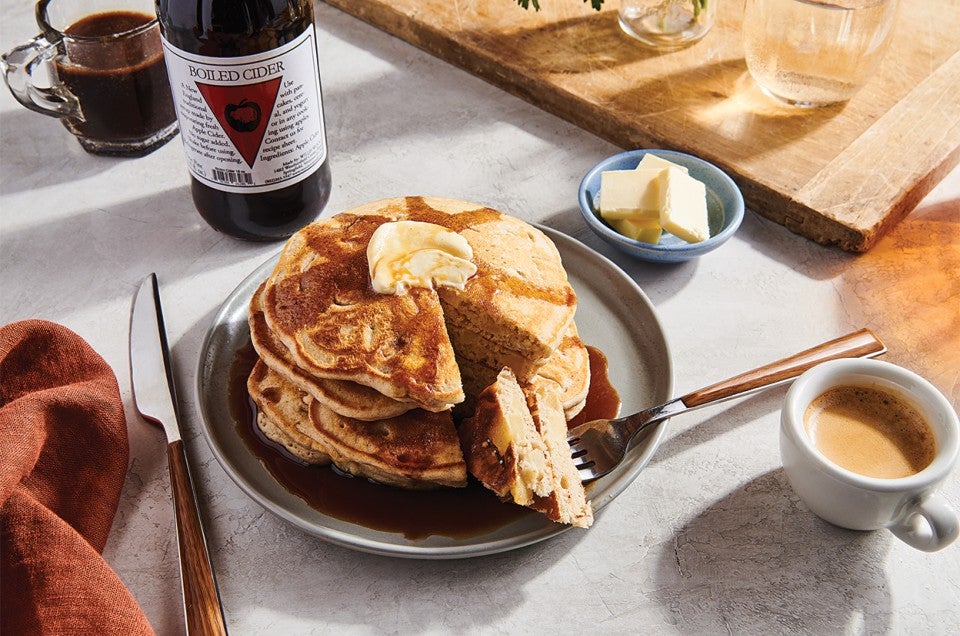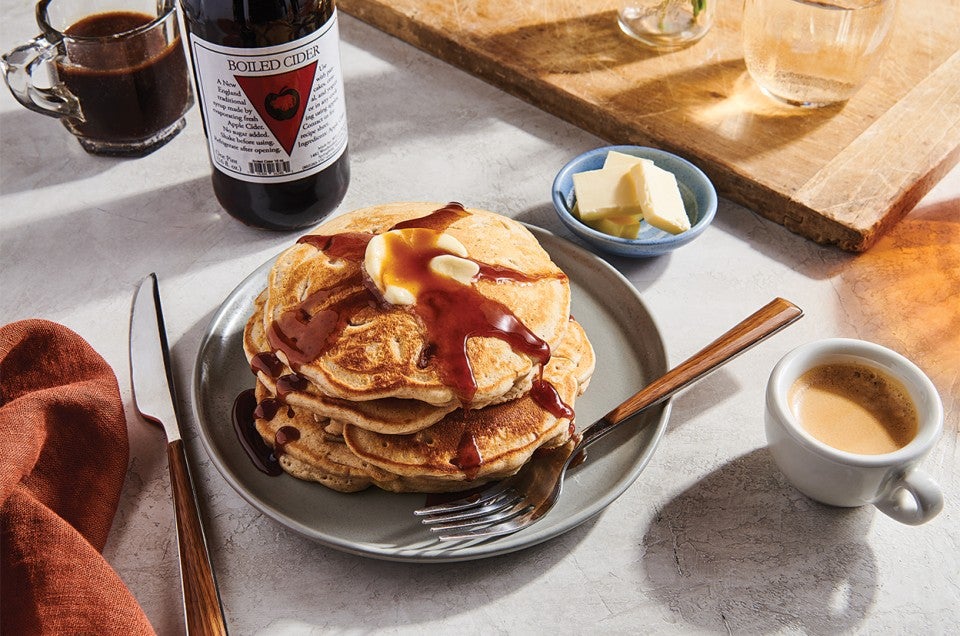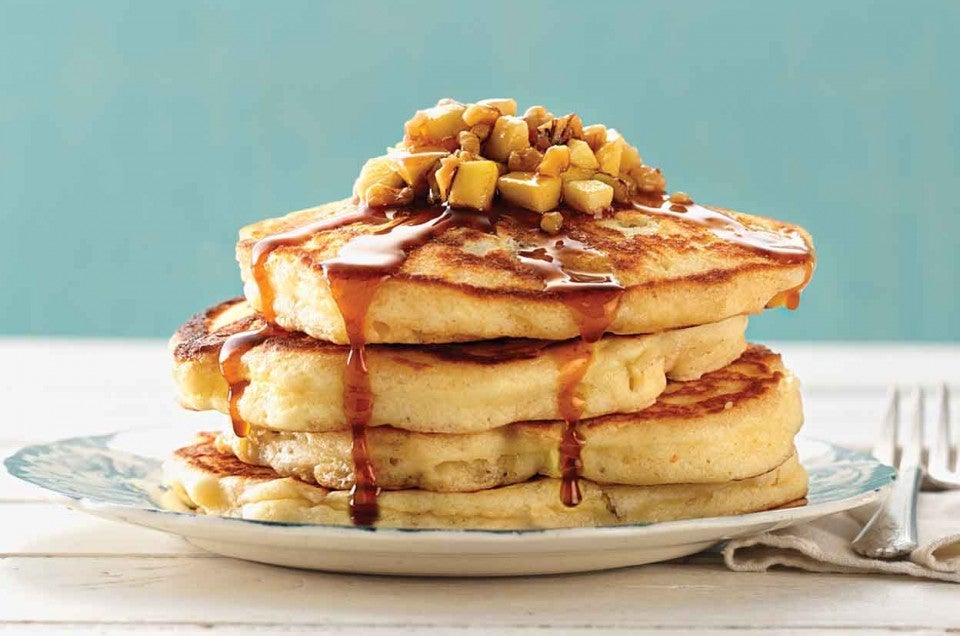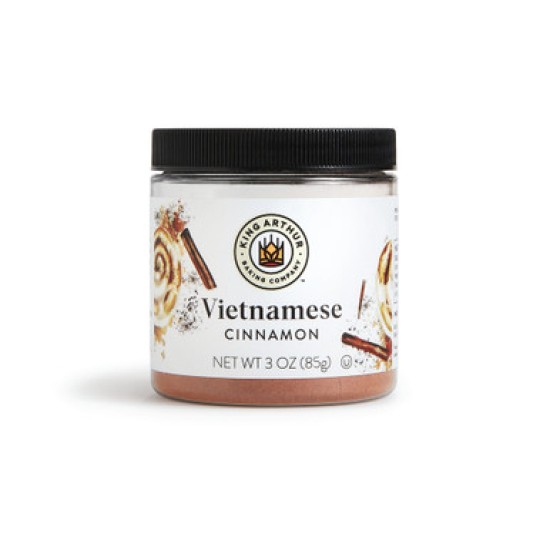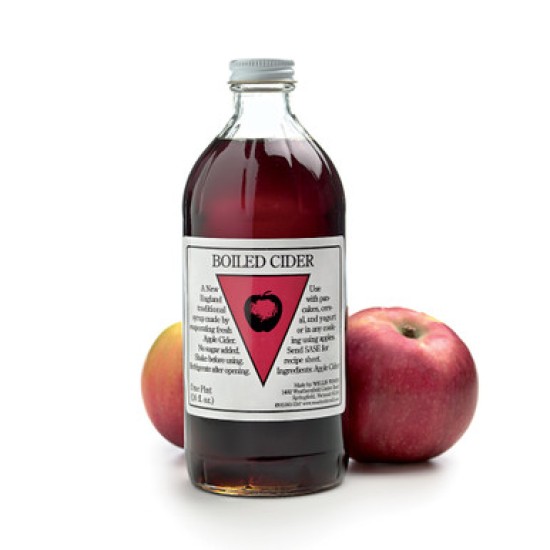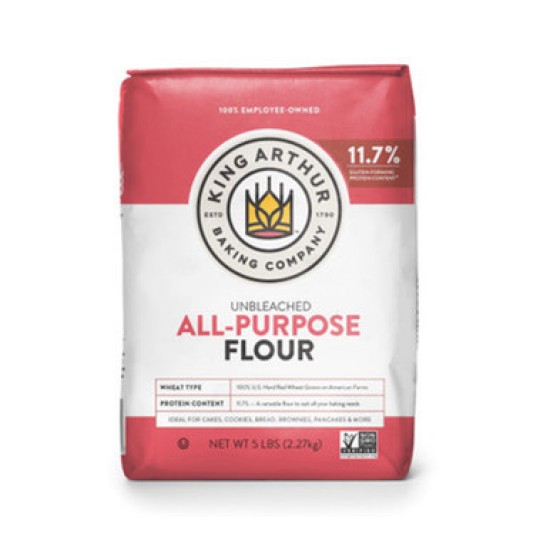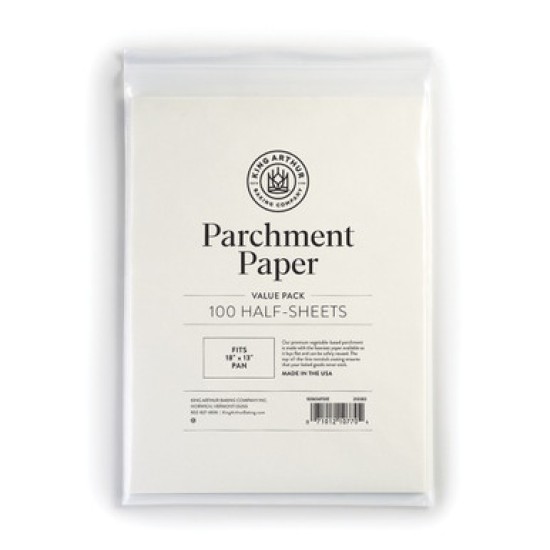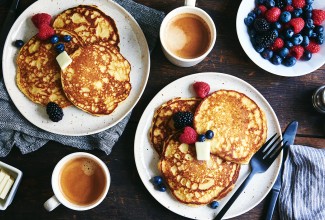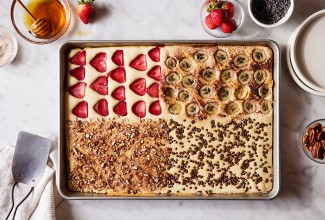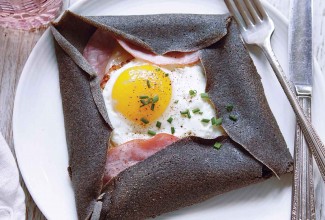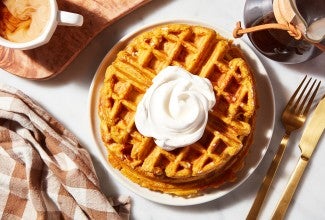Apple Pancakes with Boiled Cider Syrup
These pancakes are great any time of the year, but we particularly like them during the crisp autumn days just after the apple harvest. The boiled cider for the syrup is an old New England specialty; it's simply apple cider which has been boiled down to syrup consistency, somewhere between cider and jelly.
